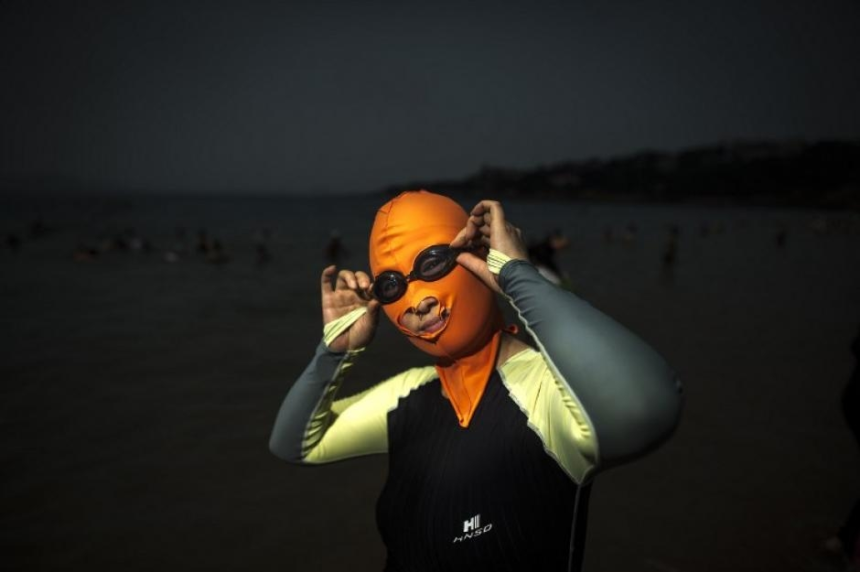
Introduction
As the blazing sun scorches the summer in China, people are turning to innovative and fashionable solutions to protect themselves from the harmful UV rays while staying stylish. Among the emerging trends, the ‘facekini’ has made a remarkable comeback, offering comprehensive sun protection in a unique and eye-catching manner. While it may not be for everyone, this UV-resistant coverup has become a symbol of sun safety and cultural beauty standards in China. Let’s delve into the soaring popularity of this trend and explore the thoughts of Indian designers and influencers on this distinctive fashion accessory.
The Facekini’s Revival
The ‘facekini’ first gained popularity in the early 2000s, particularly in coastal cities like Qingdao. Now, it has resurfaced as an essential summer accessory due to record-breaking temperatures that reached a staggering 52.2 degrees Celsius in mid-July. This practical solution not only safeguards individuals from extreme heat but also shields them from harmful UV radiation, a leading cause of skin problems and tanning.
Cultural Beauty Standards and the Facekini
One significant reason for the resurgence of the facekini is rooted in cultural beauty standards, particularly in Chinese society. In many Asian cultures, including China, fair and unblemished skin is traditionally perceived as an ideal and a symbol of social status. As a facekini covers the entire head except for the eyes, nose, and mouth, it provides effective protection against the sun’s rays, helping people maintain their desired complexion while preventing sunspots and tanning.
The Opinions of Indian Designers and Influencers
As the trend captures attention, we reached out to Indian designers and influencers to gauge their thoughts on the facekini.
1. Rupali Hasija, Fashion Influencer:
Rupali appreciates the innovation behind the facekini and how it aids in protecting individuals during the scorching summers. However, she admits feeling a sense of claustrophobia just by looking at it, indicating that it might not be a comfortable choice for everyone.
2. Anvita Sharma, Fashion Designer:
Anvita finds the facekini’s concept logical and intriguing, appreciating its potential as an artistic fashion accessory. She enthusiastically supports the trend and suggests exploring opportunities to make creative additions to enhance its appeal.
3. Siddhartha Bansal, Fashion Designer:
Siddhartha embraces the idea and purpose of the facekini in providing protection against harmful UV radiation and potential skin problems. However, he expresses personal reservations about wearing it, finding it a bit too extravagant for his tastes.
Conclusion
As China experiences a heatwave and battles extreme temperatures, the facekini emerges as a hot new fashion trend, offering both sun protection and adherence to cultural beauty standards. Its return to the limelight showcases how people are willing to explore innovative ideas for safeguarding their skin from the sun’s harmful effects. While some individuals might find it discomforting or over-the-top, others view it as an artistic expression and a logical approach to staying protected during the harsh summer months. As fashion continues to evolve, the facekini stands as a testament to the human spirit of creativity and adaptability in the face of challenging environmental conditions.






